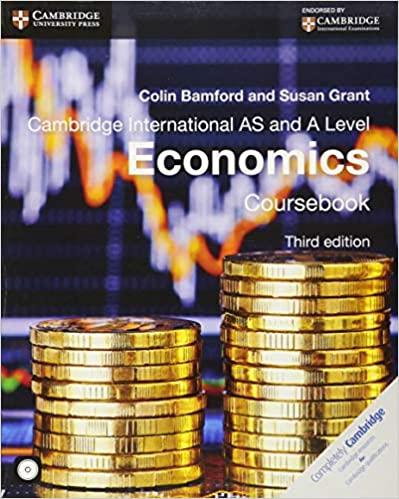Question
1 The Bank of Canada has simultaneously reduced the reserve requirements for commercial banks and increased bond buying policies. All else equal, what is the
1 The Bank of Canada has simultaneously reduced the reserve requirements for commercial banks and increased bond buying policies. All else equal, what is the effect of this monetary policy on the exchange rate of Canadian dollars for U.S. dollars?
A) The exchange rate of Canadian dollars to U.S. dollars will remain the same
B) The exchange rate of Canadian dollars to U.S. dollars will go down
C) The exchange rate of Canadian dollars to U.S. dollars will go up
2. A central bank can use its power over interest rates to control
a) Foreign exchange rates and the money supply
b) The inflation rate only
c) The money supply and the inflation rate
3. Which of the following factors will most likely cause movement along the economy's aggregate demand curve:
a) House hold Income
b) Foreign Trade
c) Price Of substitute
4) The Canadian economy is in a recession and the Bank of Canada decides to implement an expansionary monetary policy. However, due to the state of the economy, commercial banks are reluctant to lend money to consumers. This limitation to monetary policy is best known as
a) Asset Bubbles
b) Lending Cycles
C) Excessive Reserves
5) Increased productivity of Canadian car producers relative to car producers in the United States will most likely affect Canada's floating exchange rate through:
a) Increased demand of the Canadian dollar
b) Increasing the supply of the Canadian dollar
c) creasing government expenditure
Step by Step Solution
There are 3 Steps involved in it
Step: 1

Get Instant Access to Expert-Tailored Solutions
See step-by-step solutions with expert insights and AI powered tools for academic success
Step: 2

Step: 3

Ace Your Homework with AI
Get the answers you need in no time with our AI-driven, step-by-step assistance
Get Started


